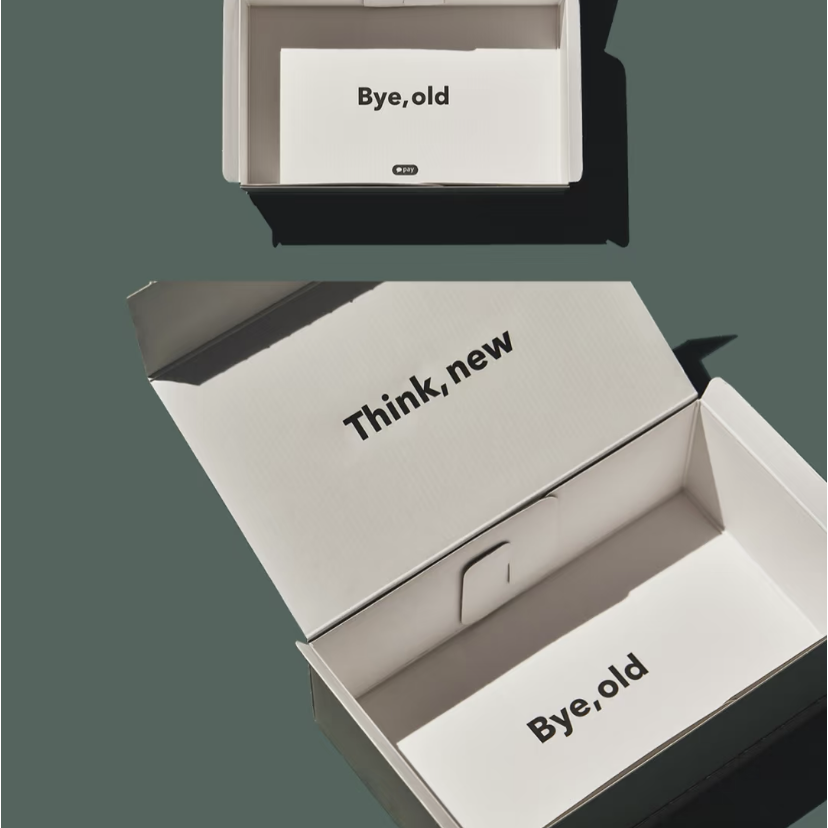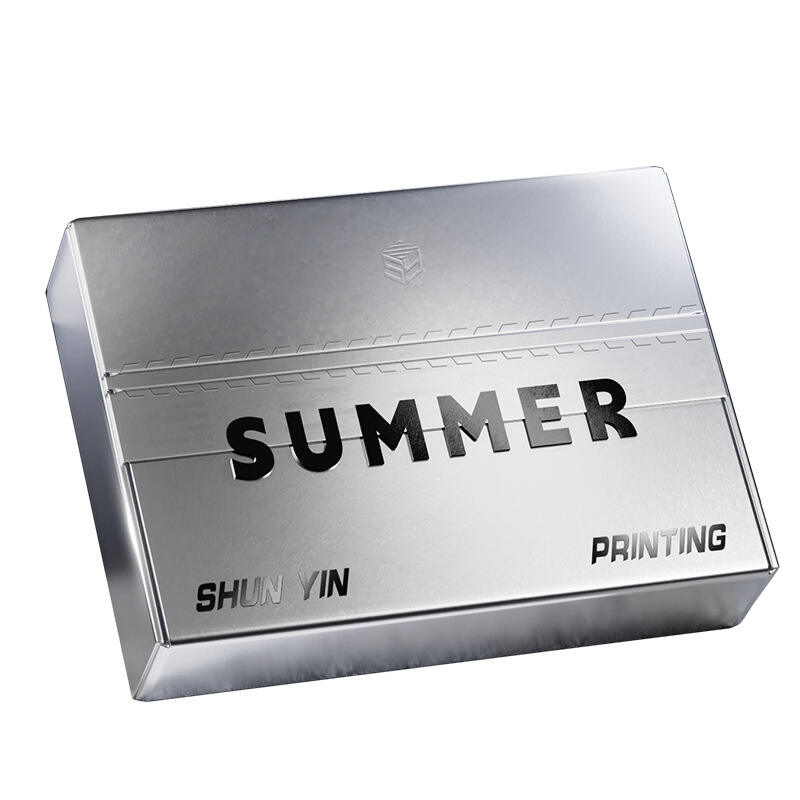Որակյալ փաթեթավորման ռազմավարական ազդեցությունը ժամանակակից բիզնեսում
Այսօրվա մրցակցային շուկայական համատեքստում պակեր դրսևորվել են որպես կարևորագույն տարր, որը զգալիորեն գերազանցում է պարզապես ապրանքի պաշտպանությունը: Դրանք ծառայում են որպես բրենդերի լուռ դեսպաններ՝ ստեղծելով հիշարժան տպավորություններ և ազդելով գնման որոշումների վրա: Փաթեթավորման տուփերի ռազմավարական կիրառումը կարող է բարձրացնել բրենդի ընկալվող արժեքը, բարելավել հաճախորդի փորձառությունը և վերջնականապես նպաստել բիզնեսի աճին: Քանի որ սպառողները ավելի ու ավելի են տարբերվում իրենց գնումների նկատմամբ, փաթեթավորման դերը պարզ ամանից վերածվել է հզոր մարքեթինգային գործիքի, որը փոխանցում է բրենդի արժեքներն ու ապրանքի որակը:
Փաթեթավորման դիզայնի հոգեբանությունը
Վիզուալ տարրեր, որոնք ձևավորում են սպառողական վարքագիծը
Փաթեթավորման դիզայնի հոգեբանությունը խորը արմատավորված է մարդկային ընկալման և հույզերի ռեակցիայի մեջ։ Երբ սպառողները հանդիպում են փաթեթավորման տուփերին, նրանց ուղեղները մի քանի վայրկյանի ընթացքում մշակում են տեսողական տարբեր ցուցիչներ՝ ձևավորելով անմիջական կարծիք ապրանքի որակի և բրենդի արժեքի մասին։ Գունային սխեմաները, նյութերը և կառուցվածքային դիզայնը համատեղ աշխատում են՝ ստեղծելով հուզական կապ։ Լքսուտյան բրենդերը հաճախ օգտագործում են նվազագույն դիզայն՝ օգտագործելով caորակյա նյութեր, իսկ էկո-գիտակից բրենդերը շեշտադրում են կայուն փաթեթավորման տուփերը, որոնք արտացոլում են նրանց շրջակա միջավայրի նկատմամբ պարտավորությունը:
Տակտիլ փորձ և բրենդի հիշողություն
Փաթեթավորման տուփերի ֆիզիկական հպումը ստեղծում է բազմազգայության փորձառություն, որը ամրապնդում է ապրանքանիշի հիշողությունը: Տեքստուրան, քաշը և բացման մեխանիզմները նպաստում են ընդհանուր տպավորության ձևավորմանը: Հարուստ փաթեթավորման տուփերը հաճախ օգտագործում են հատուկ պատվաստումներ՝ ինչպես օրինակ՝ ներկված ծածկույթներ կամ կորցրած տարրեր, որոնք բարձրացնում են բացման փորձառությունը: Այս տակտիլային ներգրավվածությունը օգնում է ստեղծել այնպիսի անմոռանալի պահեր, որոնք հաճախորդները կապում են որակի և վարպետության հետ:
Տևական փաթեթավորման լուծումներ
Շրջակա միջավայրի համար անվտանգ նյութեր և նորարարություն
Ժամանակակից փաթեթավորման տուփերը ավելի շատ են օգտագործում կայուն նյութեր՝ առանց որակի կամ գրավչության վրա ազդելու: Կենսաքայքայվող տարբերակները, վերամշակված նյութերը և նորարարական բուսական նյութերը ցույց են տալիս շրջակա միջավայրի նկատմամբ պատասխանատվություն՝ պահպանելով կառուցվածքային ամրությունը: Ընկերությունները ներդրում են հետազոտությունների և մշակման մեջ՝ ստեղծելու փաթեթավորման տուփեր, որոնք նվազագույնի հասցնում են շրջակա միջավայրի վրա ունեցած ազդեցությունը՝ առավելագույնի հասցնելով պաշտպանությունն ու ներկայացումը:
Կիրկուլյար տնտեսության ինտեգրացիա
Առաջընթաց ձեռնարկությունները փաթաթման տուփեր են նախագծում՝ հաշվի առնելով դրանց կյանքի վերջը: Կրկին օգտագործվող առկղերը, հեշտությամբ վերամշակվող նյութերը և բազմաֆունկցիոնալ նպատակներ սպասարկող փաթաթումը նպաստում են շրջանային տնտեսության սկզբունքներին: Այս մոտեցումը ոչ միայն նվազեցնում է թափոնները, այլ նաև արժեք է ավելացնում՝ հաճախորդներին տրամադրելով փաթաթման տուփեր, որոնք կարող են կրկնությամբ օգտագործվել կամ արդյունավետ վերադարձվել նյութերի շրջանառության համակարգ:
Պատվերավորում և Մարկային Հանդիսացում
Պարամետրերի հարմարեցման մեթոդներ
Չափսին հարմարեցված փաթաթման տուփերը անսահման հնարավորություններ են տալիս բրենդի արտահայտման և հաճախորդների ներգրավման համար: Թվային տպագրության տեխնոլոգիաները թույլ են տալիս կարճ շրջանակներում արտադրել եզակի դիզայներ, սեզոնային տարբերակներ կամ անհատականացված տարրեր: Խելացի փաթաթման տուփերը, որոնք ներառում են QR կոդեր կամ լրացված իրականության հնարավորություններ, ստեղծում են փոխազդեցիկ փորձառություններ, որոնք կապ են ստեղծում ֆիզիկական և թվային աշխարհների միջև՝ խթանելով բրենդի ներգրավվածությունը և ապրանքի մասին տեղեկատվության հասանելիությունը:
Ապրանքանիշի համապատասխանությունը փաթեթավորման գծերի միջև
Հաջող բրենդերը պահպանում են վիզուալ համակեցություն իրենց փութիչի տուփերի վրա՝ հարմարվելով տարբեր արտադրանքների պահանջներին: Այս համակեց մոտեցումը ամրապնդում է բրենդի ճանաչումը և կառուցում է վստահություն՝ համարյա լինելով: Արդյոք դա մանրածախ փութիչ, տեղափոխման տուփեր կամ գովազդային նյութեր են, համակեց դիզայնի տարրերի պահպանումը օգնում է ամրապնդել բրենդի ինքնությունը յուրաքանչյուր փուլում:

Մասնագիտական տեսք տարբեր շուկաներում
Մանրածախ միջավայրի օպտիմալացում
Մանրածախ վաճառքի պայմաններում փաթեթավորման տուփերը պետք է միաժամանակ կատարեն մի քանի գործառույթներ: Նրանք պետք է պաշտպանեն արտադրանքը, գրավեն ուշադրությունը խանութի թեքատների վրա, փոխանցեն կարևոր տեղեկատվություն, և հեշտացնեն կենտրոնացված կերպով կառավարումը: Մասնագիտական փաթեթավորման դիզայնը հաշվի է առնում թեքատների տեսանելիությունը, պահեստավորման արդյունավետությունը և մանրածախ ցուցադրման պահանջները՝ առավելագույն ազդեցություն ունենալու համար մրցակցային մանրածախ միջավայրում:
Էլեկտրոնային առևտրին հարմարված
Էլեկտրոնային առևտրի աճը ստեղծել է նոր պահանջներ այն փաթեթավորման տուփերի նկատմամբ, որոնք առավելագույնս ապահովում են ինչպես պաշտպանությունը, այնպես էլ ներկայացումը: Առցանց մանրածախ վաճառողները անհրաժեշտ են լուծումներ, որոնք երաշխավորում են ապրանքների անվտանգ հասնելը՝ միաժամանակ ապահովելով հ exciting unboxing փորձառություն: Ժամանակակակից էլեկտրոնային առևտրի համար նախատեսված փաթեթավորման տուփերում ինտեգրված են խելացի չափսերը, պաշտպանական տարրերը և հետ ուղարկման հնարավորությունը՝ առանց զիջելու էստետիկ գրավչությանը:
Փաթեթավորման նորարարությունների ապագայի միտումներ
Ինտելեկտուալ փաթեթավորման ինտեգրում
Փաթեթավորման տուփերի ապագան կապված է խելացի տեխնոլոգիաների ինտեգրման հետ: Ջերմաստիճանին զգայուն ցուցիչներից մինչև NFC-ով ապահովված տեղեկությունների փոխանակում՝ նորարարական հատկանիշները բարելավում են ապրանքի պաշտպանությունն ու սպառողների ներգրավվածությունը: Այս նվաճումները օգնում են ապրանքանիշերին տարբերվել մրցակիցներից՝ միաժամանակ ավելի մեծ ֆունկցիոնալություն ապահովելով վերջնական օգտատերերին:
Շրջապատին հարմարվող նախագծման լուծումներ
Քանի որ շուկայի պահանջները փոխվում են, փաթեթավորման տուփերը դառնում են ավելի ճկուն և բազմաֆունկցիոնալ: Մոդուլային դիզայնները, կարգավորվող չափսերը և ձևափոխվող կառուցվածքները ապահովում են ճկունություն՝ պահպանելով մասնագիտական տեսքը: Այս ճկունությունը օգնում է ընկերություններին արդյունավետ արձագանքել սպառողների նախընտրությունների և շուկայական պահանջների փոփոխություններին:
Հաճախ տրվող հարցեր
Ինչն է փաթեթավորման տուփերին տալիս մասնագիտական և արժեքավոր բնույթ:
Մասնագիտական փութիչի տուփերը միավորում են որակյալ նյութեր, մտածված դիզայն, բրենդի համակեցություն և գործառույթային հատկանիշներ, որոնք պաշտպանում են արտադրանքները՝ միաժամանակ բարելավելով հաճախորդի փորձը: Արժեք է ավելանում կայուն նյութերի, խելացի հատկանիշների և այն դիզայնների միջոցով, որոնք համապատասխանում են բրենդի ինքնությանը և շուկայական պահանջներին:
Ինչպե՞ս կարող են ընկերությունները օպտիմալացնել իրենց փաթեթավորման ստրատեգիան
Կազմակերպությունները պետք է կենտրոնանան իրենց թիրախային շուկայի հասկացողության վրա, ներառեն կայուն նյութեր, պահպանեն բրենդի համակեցություն և ներդրումներ կատարեն նորարարական հատկանիշներում, որոնք բարելավում են օգտատիրոջ փորձը: Պարբերաբար գնահատեք փութիչի արդյունավետությունը և մնացեք թարմագույն գործնախարարություն միտումները ապահովում են շարունակական արդյունավետություն:
Ի՞նչ դեր է խաղում կայուն փաթեթավորումը բրենդի արժեքի ձևավորման գործում:
Կայուն փաթեթավորման տուփերը ցուցադրում են շրջակա միջավայրի նկատմամբ պատասխանատվություն, դիմում են էկոլորտի գիտակցված սպառողներին և հաճախ նյութերի օգտագործման արդյունավետության շնորհիվ հանգեցնում են ծախսերի կրճատման: Շրջակա միջավայրի նկատմամբ պատասխանատվության այս նվիրվածությունը բարձրացնում է բրենդի հեղինակությունը և բավարարում է սպառողների աճող պահանջարկը շրջակա միջավայրի պահպանման նկատմամբ:

